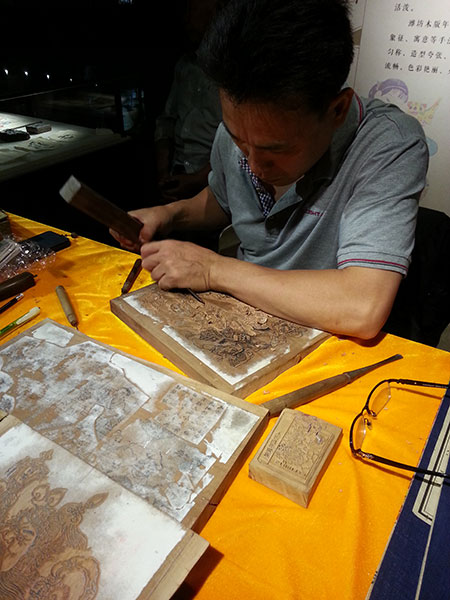Ancient books are today rare, but even rarer are those wooden blocks used to print books hundreds of years ago. The show of precious printing blocks at the National Museum of Classic Books, which opened last week and runs through the end of July, features a large collection of the blocks known as woodcuts. It's the first and the most comprehensive exhibition of its kind in China.

Block printing originated from the Tang Dynasty (AD 618-907), when Buddhist sutras were widely printed. People had to engrave characters on a block, and a book required hundreds of woodcuts to print. The world's earliest book is the Chinese scroll known as the Diamond Sutra, printed in 868 and now in the collection of the British Museum.
The earliest woodcut in the show is from the Western Xia regime (1038-1227), unearthed in 1990 in a pagoda in the Ningxia Hui autonomous region. It was used to print an interpretative book of sutras. Blocks from the Qing Dynasty (1644-1911) reveal important medical texts passed down from the Song Dynasty (960-1279), when the spread of block printing reached its peak.
Woodcut printing was used for more than books. The technique was widely applied in daily life. Blocks in the exhibition were used to print posters, contracts, pictures for Spring Festival, marriage certificates and patterns to ward off diseases and troubles. Most blocks of this kind were used only once; they are more difficult to find than books.

An says that printing blocks need a large place to be stored and are hard to transport. Compared with ancient books, they're more difficult to protect and pass down.
Shi Jinbo, director of the research center of the culture of the Western Xia regime at the Chinese Academy of Social Sciences, says that there are many ancient books from the Song Dynasty, but the blocks are rare. The only existing block for the printing of ancient books in the Song Dynasty is in the United States. Germany, meanwhile, has the most blocks from the Western Xia regime.
"I suggest that China's block protection should start from private collectors. Shows of this kind are a good way to increase public awareness," says Shi.
The show also invites experienced craftsmen from ancient-book printing houses to demonstrate how to make woodcuts and demonstrate the process of printing.
This year, blocks for ancient book printing are on the protection list of China's rare ancient books, so institutions that collect these relics will receive government support and funding.
Author: Deng Zhangyu | Source: China Daily [June 25, 2015]